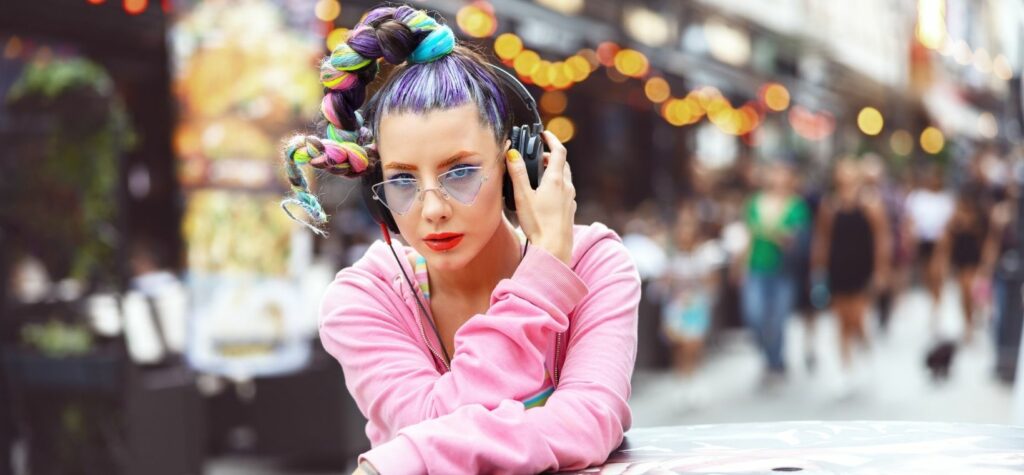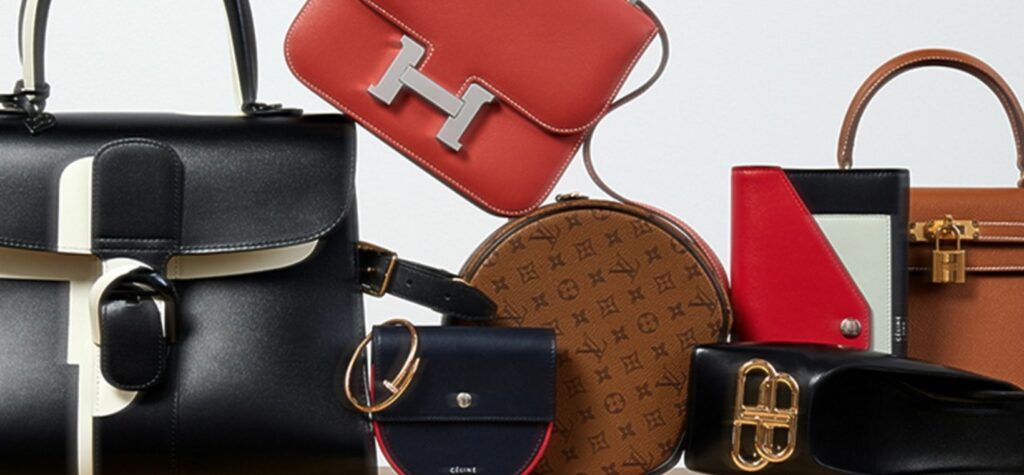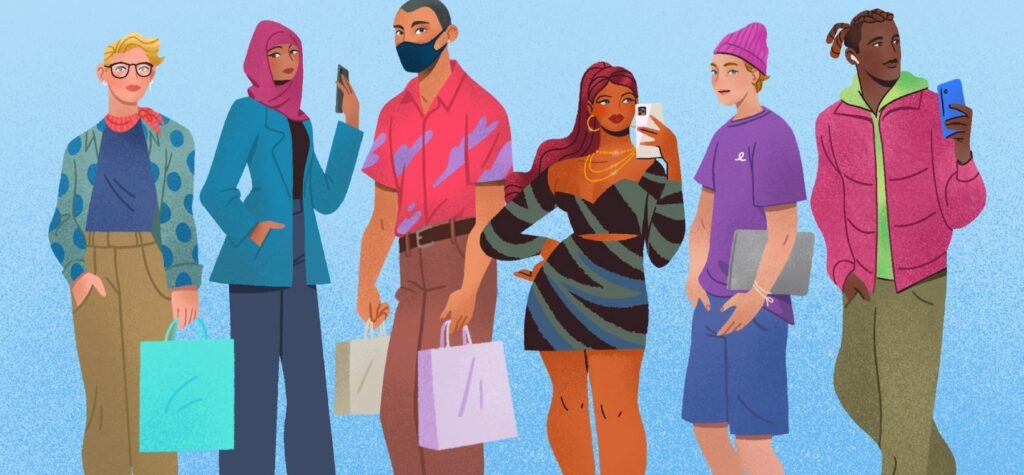We use cookies to improve your experience. By continuing to use this website you agree to our cookie policy.

Luxury fashion sees a notable shift in the demographics of its customers to newer, younger retail luxury buyers. With consumers becoming younger and more fashion-conscious, the new audience is a breath of fresh air for the industry and a wake-up call to those who have yet to adapt their virtual presence appropriately. This. In particular, by 2026, Millennials and Gen Z will make up more than 60 percent of luxury spending, up from 39% in 2019.
This latest shift in the industry calls for innovative and compelling marketing strategies, not just adjusting, but forming a unique experience to attract that ‘it’ trendy customer.
Although we already see the high demand for luxury goods rising, what are the specific core pillars that attract the new Gen-Z and millennial shoppers into the market?
Culture, culture, culture
The dynamic motion built on social interaction between business, customer, creator, and the everyday person shifts what matters most to this consumer. Those who create genuine narratives and reliable cultural references are those who are most in control of building a trustworthy and long-lasting relationship with this next-generation consumer. It’s become more and more significant for a brand to not focus singularly on making sales but also concentrating on the culture that encircles them.
For luxury brands to respond accordingly, they should focus their integrity around sustainability, diversity and inclusivity. A brand isn’t just for what it sells anymore, a brand is an innovative anecdote, and the new client buys into the story, not the item solely.
“To reach Gen Z, it’s important that the [partner] celebrity represents and what they believe in mirrors what the luxury brand also believes in. Luxury brands have evolved their values as the world has paid more attention to issues of diversity, equity and inclusion.”Elena Romero, professor and author.
The Power of Influencers
The younger audience may find revelation from online sources, but it is best not to ignore how they are influential themselves. Being so engrossed in distinct technologies and the modern future, they are the pathfinders that most people support. These luxury buyers pick up on new trends and ideas makes them very easy to be inspired by.
According to BCG, young luxury consumers are 30% more likely than the average luxury consumer to talk to others about their purchases and 60% more likely to recommend a brand to others.
With that being said, the passion for influence goes a long way for a consumer when the brand collaborates with a well-known influencer or celebrity who resonates with the consumer and brand values.
Sarah Willersdorf, partner and managing director at BCG, mentions that luxury brands are creating more lasting relationships with cutting-edge, youth-inspired designers like Rihanna and her new Fenty Maison with LVMH and Virgil Abloh, men’s wear design director for Louis Vuitton.

Pre-loved luxury
The second-hand luxury market is estimated at $22 billion, picking up its momentum in becoming as mainstream as ever. According to Forbes, overall, 44% of consumers surveyed say they reflect on the resale value of new items they purchase, with 50% of Millennials thinking; this, long terms to a much vaster range than Gen-Xers (35%) or Boomers (24%).
It doesn’t appear to be simply the lower price that attracts the younger generation into buying pre-owned luxury, but also the demand for exclusive, limited-edition purchases that can no longer be sold elsewhere, including vintage items.
Furthermore, top-ranked re-selling platforms like Vestaire Collective and Vinted are gaining more popularity, with app users wanting to clear out their closets and start fresh, selling items of all types within the luxury sphere.

Sustain the sustainability
Social responsibility has become a significant factor in purchasing clothing, and this new generation keeps it at the top of their mind.
Statistics show that today, 56% of true luxury buyers are adjusted to luxury brands’ position on social responsibility instead of 45% in 2013. 62% say they will decide to conduct business with a brand that encourages sustainability over a brand that does not contrast with 50% in 2013.
What stands out most is the Asian market within luxury fashion and sustainability seem to pay more care to the topic. 81% South Koreans, 70% Japanese, and 66% Chinese say that sustainability means most to them when purchasing luxury goods. 66% French, 45% Americans and 43% British demand they consider sustainability too.
While older generations claim to be concerned with ethical manufacturing, enZ and Millenials claim to be concerned mainly for the environment and animal care

Digital Natives
Younger shoppers are well-known for their demand for an innovative experience. With all the changes that we go through digitally, it’s no surprise that these luxury buyers are searching for a more personalized experience.
COVID-19 will undoubtedly have long-lasting effects on the way people shop, and the young buyer is no exception to that. Youngsters navigate the web and online shopping stores, their native environment, so the demand for a unique shopping environment is now greater than ever.
The world of virtual shopping ties in perfectly with virtual reality. Luxury brands are finding ways to create an exciting experience for that young buyer, and VR shopping stores are precisely what has been doing the job. VIP experiences, immersive stores where one walks around a virtual fantasy-like universe address GenZ’s demand for an elevated retail experience, and with mobile- the options are limitless.
Luxury brands are now viewing virtual experiences as a combination of an eco-friendly approach to fashion and manufacturing, genuine life inclusivity, and an adventure that wows their audience online and prompts them to buy. It’s not about just selling an item to a customer anymore; it’s about appealing to that customer who will engage in your marketing and sales efforts while grasping him as a long-term customer, at that age where consumers start developing their brand loyalty. To find out more about virtual fashion stores, check out Emperia’s VR solutions here.
